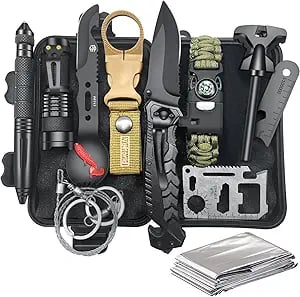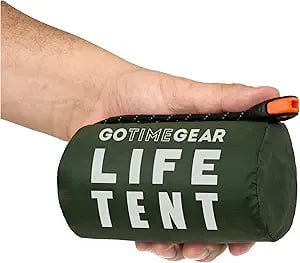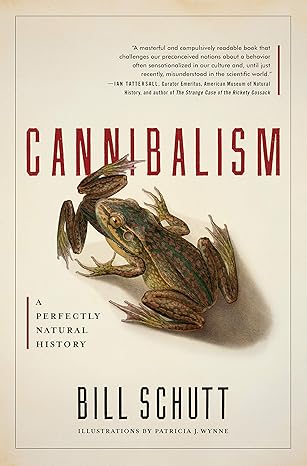Cannibalism in Survival Situations: The Darkest Decision
There’s a question buried deep within all of us, one we pray we’ll never have to answer. What would you do to survive? When the chips are down, the snowstorm is relentless, and the pantry is a desolate wasteland, how far would you go to keep your heart beating? Will you resort to cannibalism in survival situations?
SURVIVAL
As an Amazon Associate, I earn from qualifying purchases. This means I may earn a commission if you click on an affiliate link and make a purchase, at no extra cost to you.




JIHPEN sword,Michonne's Katana The Walking Dead - 40.5in


VEITORLD Gifts for Men Dad Him Christmas, Survival Gear and Equipment 12 in 1, Survival Kits, Cool Unique Fishing Hunting Birthday Gift for Husband Teen Boy Boyfriend Women, Stocking Stuffers for Men


Family Comfort 72 Emergency Survival Kit/Backpack – 72 Hour for 2 People – Disaster Preparedness – Delicious ReadyWise Food, Gear, Lighting, First Aid, Tools & More - Sirius Survival
Cannibalism. Just reading the word makes your stomach turn, right? It’s the darkest of taboos, a line drawn in humanity’s moral sand. But history teaches us that desperation doesn’t care about taboos.
Let’s peel back the layers of this macabre survival strategy and explore the nutritional, psychological, and moral realities of humanity’s last supper.
The Bloody History of Survival Cannibalism
Humanity has faced this horror before.
The Donner Party: An American Tragedy
In the winter of 1846-1847, 87 pioneers heading to California found themselves trapped in the Sierra Nevada by snow and misfortune. Supplies ran out. Starvation set in. What followed was a harrowing tale of survival that ended with the strongest consuming the weakest.
The Andes Plane Crash: A Nightmare at 12,000 Feet
In 1972, a Uruguayan rugby team’s plane crashed in the Andes. Stranded without food, survivors turned to the frozen bodies of their friends and family to stay alive. For 72 days, they lived with the unthinkable—and the knowledge that rescue might not arrive in time.
These aren’t just horror stories; they’re grim reminders of what humans are capable of when the will to live outweighs everything else.
Nutritional Breakdown: The Human Body as a Meal 🍖
Let’s get pragmatic: in a life-or-death scenario, the human body is an excellent source of calories and nutrients.
Muscle Tissue: High in protein, similar to beef or pork. It’s your survival steak.
Fat: Dense in calories and crucial for energy in cold climates. Think of it as survival butter.
Organs: Packed with vitamins and minerals, though some carry risks (more on that later).
But before you sharpen your knife, remember: the nutritional value is meaningless if the risks kill you first.
The Grim Risks of Dining on Homo Sapiens
Survival cannibalism isn’t a cheat code; it’s a dangerous gamble. Here’s why:
1. Prion Diseases: Brain-Eating Nightmares 🧠
Prions are twisted proteins that cause deadly brain diseases like kuru and Creutzfeldt-Jakob disease. These diseases are untreatable and turn your brain into a spongy mess. Want to avoid this? Stay away from the brain and spinal tissues.
2. Bacterial Infection: The Rot Within 🦠
A corpse isn’t just a meal—it’s a petri dish. Without proper cooking, you’re inviting a banquet of bacteria and parasites. Symptoms like vomiting, fever, and sepsis can kill you faster than starvation.
3. Vitamin A Overload: Lethal Liver Love 🩸
The human liver is rich in vitamin A. Consuming too much can cause hypervitaminosis A, leading to nausea, dizziness, and even death. Moderation is key—though that’s hard to manage when your dining options are…limited.
4. Psychological Toll: The Mirror Stares Back
Even if you survive physically, the psychological fallout can be crippling. Survivors often struggle with guilt, nightmares, and the relentless judgment of society.
Could You Actually Do It?
The thought experiment is terrifying, but let’s consider the mechanics of survival cannibalism:
Step 1: Mental Preparation
If you’re truly at the edge, accept that morality takes a backseat to survival. It’s not about judgment; it’s about making it through another day.
Step 2: Prioritize Safety
Avoid brain and spinal tissues: The risk of prions isn’t worth it.
Cook everything thoroughly: Survival isn’t the time for rare steaks.
Eat fresh: Decomposition is your enemy.
Step 3: Think Long-Term
Cannibalism is a short-term fix. The psychological toll, combined with health risks, could make it a one-way ticket. You’ll need a long-term survival strategy to truly escape the nightmare.
The Spiritual and Moral Abyss
Cannibalism isn’t just a physical act; it’s a spiritual one. Many cultures see it as a violation of the soul. Will you lose your humanity with the first bite? Does Heaven close its gates forever?
For some, the act is a bridge too far. For others, survival instincts might outweigh existential fears. But even after rescue, the echoes of that choice can haunt you. Survivors often live with a scar that no amount of time can heal.
Alternatives to Cannibalism: Survive Without Crossing the Line
Before you consider the unthinkable, here are some survival options that won’t turn you into a dinner guest:
1. Wild Edibles 🌱
Learn to forage. Plants, berries, roots, and insects are often abundant and far safer than dining on human flesh.
2. Hunting Small Game 🐀
From squirrels to fish, small game is often within reach and much less traumatic to consume.
3. Emergency Food Supplies 🎒
Never underestimate the value of prepping. High-calorie snacks and MREs can mean the difference between survival and despair.
The Final Word: Survival Comes at a Cost
Cannibalism isn’t just a survival strategy; it’s a Pandora’s box of consequences. Could you do it? Maybe. But surviving isn’t just about keeping your body alive—it’s about holding onto your mind, your morals, and your humanity.
So prepare for the worst, hope for the best, and arm yourself with knowledge. Because when desperation comes knocking, you’ll need more than courage to answer.
Stay prepared. Explore more survival tips at https://warhammerblades.com.











